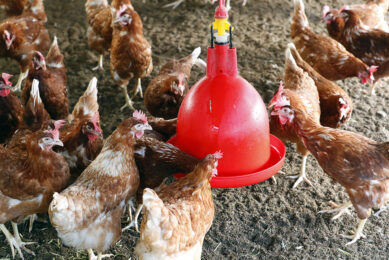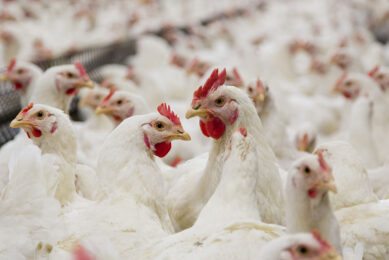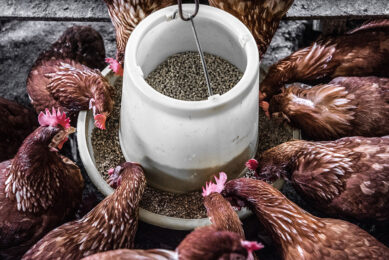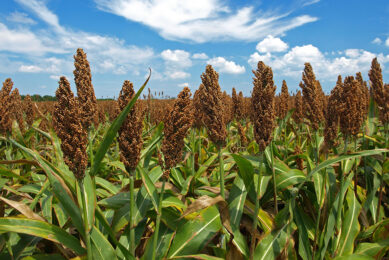Dietary fibre: A functional nutrient in poultry diets
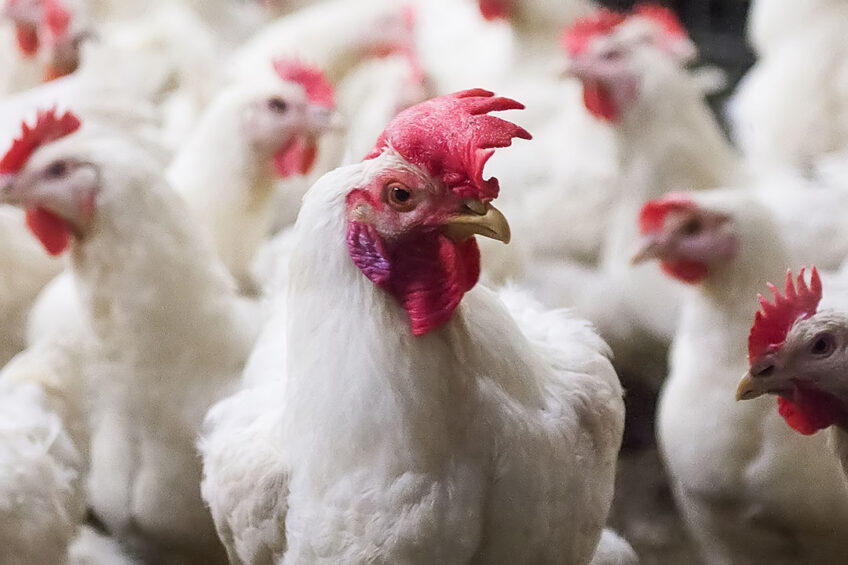
Fibres represent the biggest part of a poultry diet, recent studies show that dietary fibre has a positive impact on gut health and poultry welfare and performance. This article will discuss the dietary fibre inclusion in poultry diet and their influence in poultry health, welfare, and performance.
Poultry diet consists of approximately 70% carbohydrates including starch, oligosaccharides, and non-starch polysaccharides. Dietary fibres are carbohydrate polymers with 10 or more monomeric units that are resistant to enzymatic hydrolysis in the digestive system. They are the functional component for a normal digestive system, and represent the biggest constituent of poultry diet. Traditionally, dietary fibres are considered an antinutritional factor because of deleterious impacts on feed intake and nutrient digestibility. Although, recent studies showed that dietary fibres have significant positive impacts on the gut development, digestive physiology, nutrient digestion, fermentation, and absorption processes in poultry.
What is dietary fibre?
Dietary fibre is defined as heterogenous compounds resistant to enzymatic hydrolysis. Dietary fibres include soluble and insoluble non-starch polysaccharides and lignin. Soluble fibres increase gut viscosity, reduce the passage rate of the digesta through the gut, create hypoxic conditions in the gut, and improve pathogenic bacteria growth. Therefore, soluble fibres are avoided when formulating poultry diets. On the other hand, the physical and chemical structures of insoluble fibres and the lack of enzymes to digest non-starch polysaccharides allow insoluble fibres to be inert when mixing with the intestinal bolus; thus, they are used as feed diluents.
Effects of dietary fibre inclusion in poultry diets
Dietary fibres regulate gut morphology due to their ability to escape digestion and absorption. In addition, dietary fibres interact with nutrients of the digesta and gut microflora, regulate digestive organ activity, alter nutrient utilisation and growth performance. Chemical structure, quantity, and particle size affect dietary fibre function in poultry gut.
Influence on gut health
Dietary fibres modify gut length, villus height, crypt depth, the passage rate and size, and nutrient absorption. Diets with 2.8-9% of crude fibre increase the number and size of villi in the turkey gut. Feeding quails 1.5% micronized wheat fibre results in an increase in relative length of gut segments, villi height, villus thickness, and villi to crypt proportions. In geese, supplementing alfalfa, rice hulls, and pectins enhance villi height, and lignin inclusion reduces villi height. Cellulose supplementation increases crude protein and amino acid losses in broilers.
Influence on gizzard
Fibre inclusion stimulates the muscular activity of the gizzard, increases gizzard size, and enhances food retention time in the gizzard.
Inclusion of wood shavings augments the size of the proventriculus and gizzard, decreases the weight of the small intestine, and increases feed efficiency.
Oat hulls and soyhulls increase proventriculus and gizzard size, decrease digesta passage rate, and improve feed conversion.
Insoluble dietary fibre
Insoluble dietary fibres including cellulose, lignin, and arabinoxylans regulate the size of the small intestine, pancreas, and ceca, improve the total tract apparent retention of nutrients and feed efficiency.
In turkey, crude fibre supplementation decreases the digestibility of crude protein, fat, and gross energy and improves body weight during the first 4 weeks of age. Furthermore, insoluble dietary fibres increase pancreatic secretions such as amylases, lipases, and proteases; thus, improving substrate breakdown and the release of nutrients.
In pullets, addition of 1% insoluble fibre increases the relative weights of proventriculus, gizzard and liver and improves pancreatic proteolytic activity.
In chickens, 3% wheat bran increases relative weights of gizzard, small intestine, and pancreatic amylase and trypsin activity; thus, enhancing nutrient digestibility.
Particle size: The larger particle dietary fibres increase the retention of bolus in the upper portion of the gut, decreases the passage rate, enhance the exposure of feed components to gut enzymes, accumulate insoluble fibre in the gizzard, and augment the gastroduodenal reflux and subsequent digestibility of nutrients.
Inclusion of 3-5% of insoluble dietary fibres modulates digestion of starches, fats, and crude proteins. Pectins, β-glucans, and arabinoxylans increase gut viscosity, lower enzyme diffusion and substrate breakdown, enhance free nutrients in the gut lumen, decrease the absorption of nutrients, regulate digesta passage rate, improve gut microbiota, increase the apparent digestibility of lipids, protein, and metabolizable energy, and decrease feed efficiency in broilers.
Low-molecular weight carbohydrates such as oligosaccharides facilitate the growth of beneficial bacteria such as Lactobacillus species and Bifidobacterium species and improve gut development.
Small additions of insoluble fibres (3-5%) enhance nutrient digestibility; however, extreme supplementation interrupt digestion metabolism by creating coating structures that reduce the accessibility of digestive enzymes to nutrients.
Soluble fibre
Soluble non-starch polysaccharides are utilised by gut bacteria to provide energy. Barley and rye enhance the development of pathogenic bacteria such as Clostridium coccoides and reduce beneficial bacteria such as Bifidobacterium species. Oligosaccharides and fructans generate volatile fatty acids in broilers gut and promote the growth of beneficial bacteria in the gut. Inclusion of a mixture of oat hulls, wood shavings, and soyhulls increases the feed efficiency between 3-5% and enhances body weight between 2-5%. Although, the presence of barley and rye β-glucans, and wheat arabinoxylans increases gut problems and the risk of necrotic enteritis in poultry species.
Concluding remarks
Dietary fibre is an intrinsic component used in the formulation of poultry diets. Dietary fibres affect gut health directly by functioning as a source of energy and extra nutrients or indirectly by modulating gut microbiota and function. Moreover, both insoluble and soluble fibre influence organ growth, nutrient utilisation, and microbiota modulation.
Not all soluble fibres are antinutritional
Factors such as fibre source, particle size, level of inclusion, specie, age, physiological status, dietary energy and protein levels, and duration of inclusion determine the effects of fibres on poultry diets. Conventionally, soluble fibres have been regarded as antinutrients because of their water holding capacity and their ability to modulate gut function directly or indirectly through microbial alterations. However, not all soluble fibres are antinutritional and low molecular weight soluble fibres including oligosaccharides and inulin modulate gut microbiota and immune response.
Further research is needed to precisely find out the positive and negative effects of dietary fibres, to assess fibre from feed ingredients, to evaluate the metabolic impact of dietary fibre on the additional requirements of energy and amino acids, and to determine the effect of each fibre component from a chemical and physiological view.
Source: Research Role of dietary fibre in poultry nutrition




